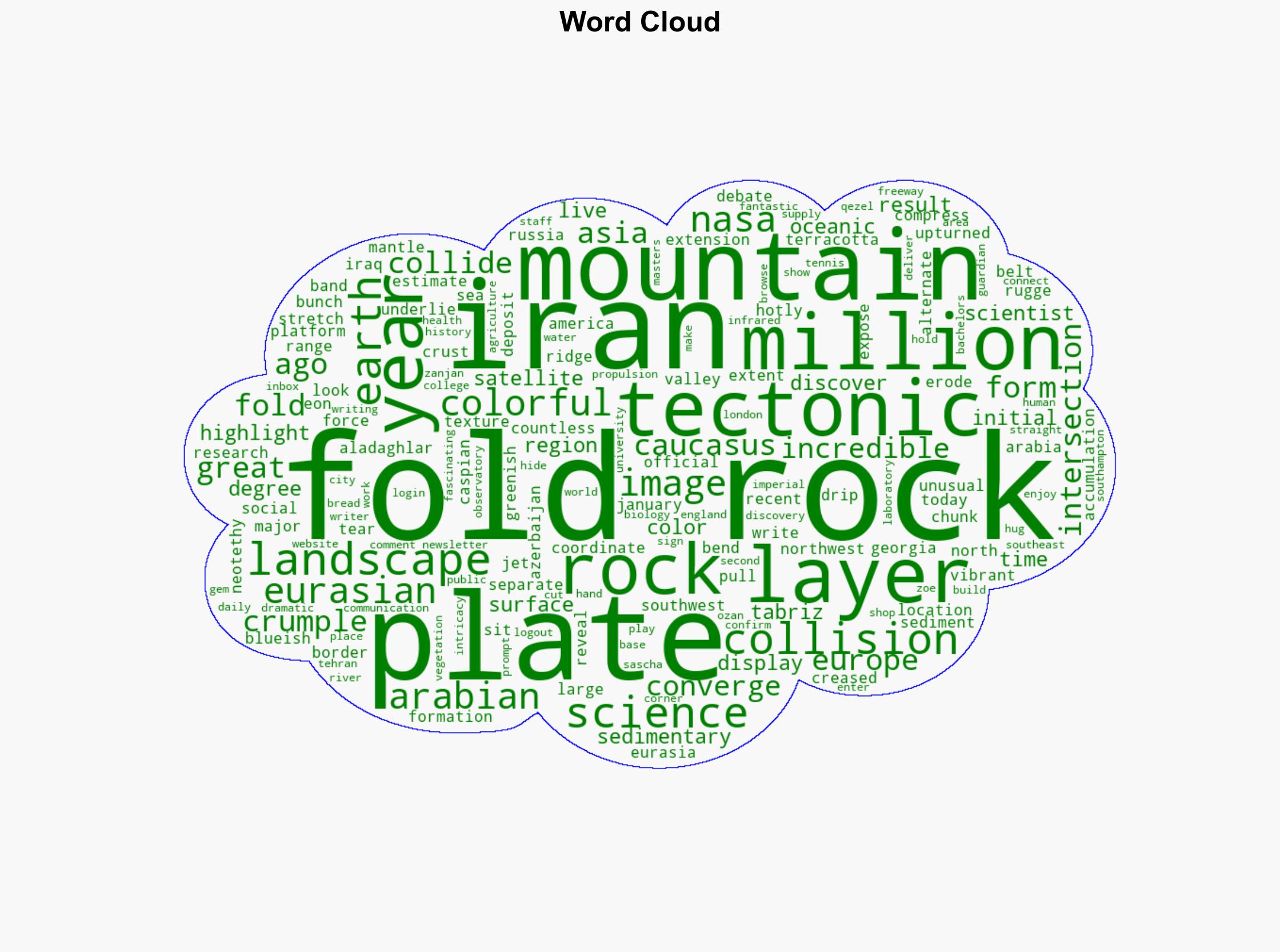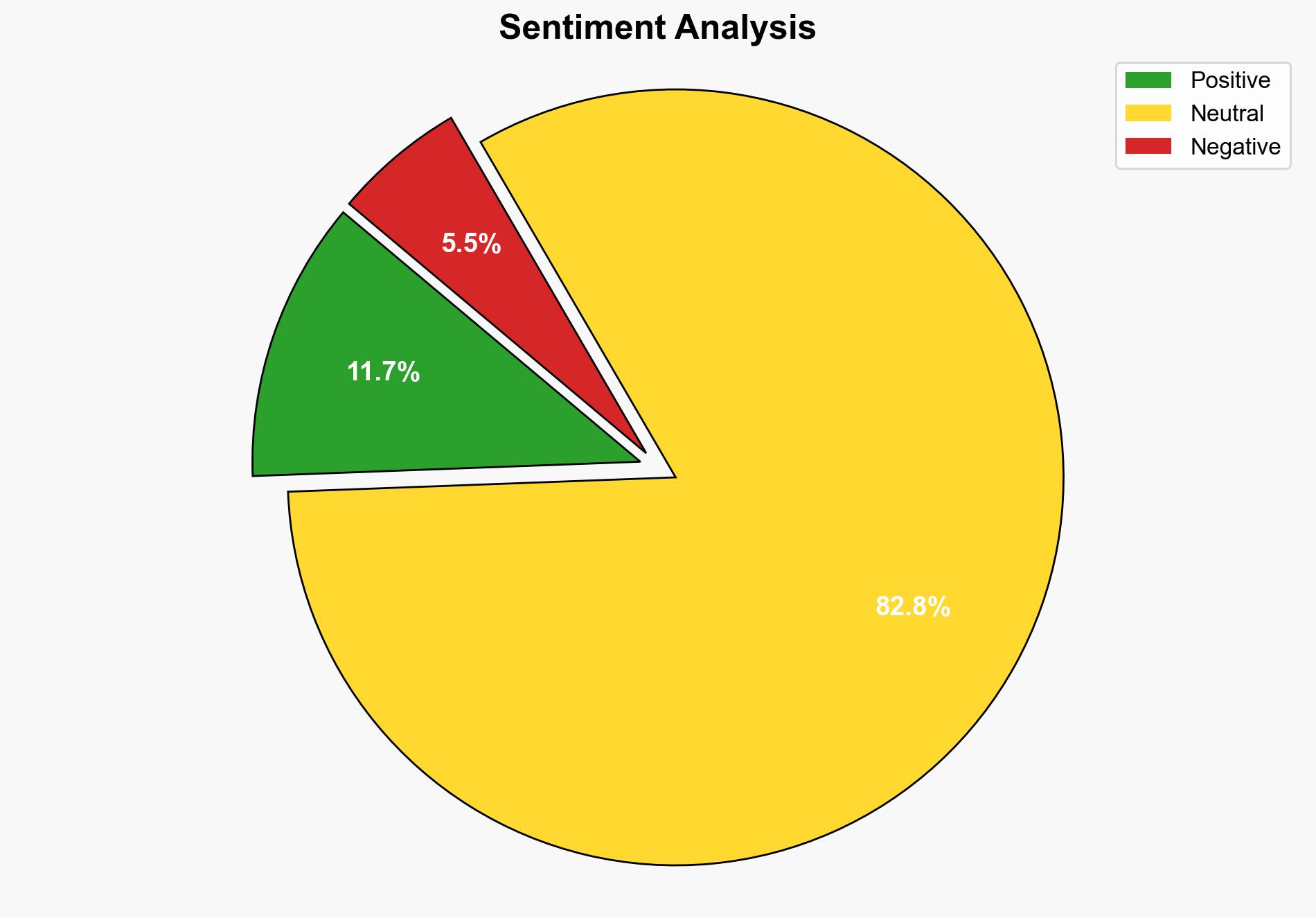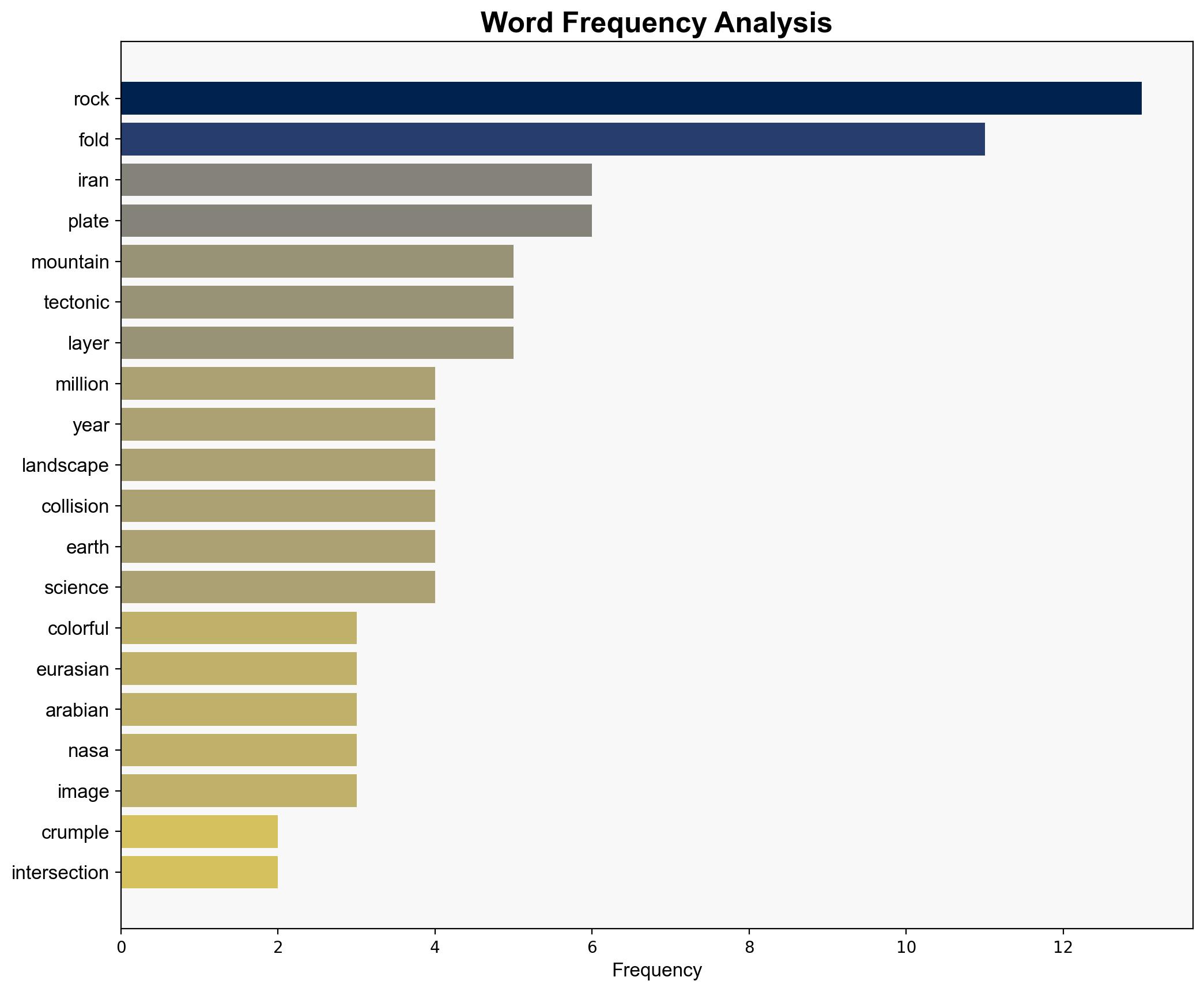Iran’s folded rocks The crumpled mountains at the intersection of Asia and Europe – Live Science
Published on: 2025-04-18
Intelligence Report: Iran’s Folded Rocks – The Crumpled Mountains at the Intersection of Asia and Europe
1. BLUF (Bottom Line Up Front)
The folded rock formations in northwest Iran, part of the Greater Caucasus mountains, are a significant geological feature resulting from the collision of the Eurasian and Arabian tectonic plates. This ongoing tectonic activity presents both opportunities and challenges for regional stability and development. Key recommendations include monitoring geological changes and assessing their impact on infrastructure and regional cooperation.
2. Detailed Analysis
The following structured analytic techniques have been applied:
SWOT Analysis
Strengths: The unique geological formations attract scientific interest and tourism, potentially boosting local economies.
Weaknesses: The region’s rugged terrain poses challenges for infrastructure development and accessibility.
Opportunities: Potential for increased scientific research and international collaboration on geological studies.
Threats: Continued tectonic activity could lead to natural disasters, affecting regional stability and safety.
Cross-Impact Matrix
The ongoing tectonic activity in Iran could influence neighboring regions by altering water resources, impacting agriculture, and potentially causing seismic events that affect cross-border infrastructure and cooperation.
Scenario Generation
Scenario 1: Increased tectonic activity leads to significant geological shifts, prompting regional cooperation for disaster preparedness and infrastructure resilience.
Scenario 2: Stabilization of tectonic movements allows for expanded tourism and scientific research, boosting local economies and fostering international partnerships.
3. Implications and Strategic Risks
The convergence of tectonic plates in Iran poses risks such as earthquakes and land deformation, which could disrupt local economies and infrastructure. The region’s strategic location at the intersection of Asia and Europe underscores the importance of monitoring these geological changes for potential impacts on international trade routes and regional security.
4. Recommendations and Outlook
- Enhance monitoring systems for early detection of tectonic activity to mitigate risks to infrastructure and populations.
- Foster international collaboration on geological research to better understand and predict tectonic movements.
- Develop infrastructure resilience plans to safeguard against potential natural disasters.
- Explore opportunities for eco-tourism and scientific tourism to leverage the unique geological features for economic benefit.
5. Key Individuals and Entities
Notable contributions from NASA officials and scientists at NASA’s Jet Propulsion Laboratory have provided valuable insights into the geological features and ongoing tectonic activity in the region.




